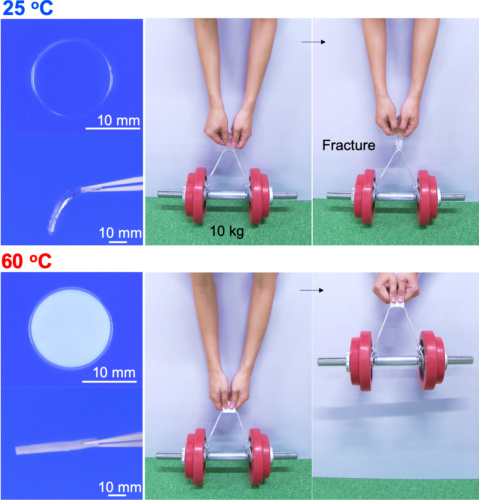Heat-loving hydrogel hardens as temperature rises
Japanese scientists have developed a hydrogel that hardens dramatically when heated and which could be used to develop protective clothing.
Inspired by thermophile organisms that rely on the heat of hot springs and thermal vents for survival, the material was created by immersing a polyacrylic acid gel in a calcium acetate aqueous solution. At room temperature, the resulting substance has the consistency of a regular hydrogel, but as the heat rises it separates into a polymer dense phase and a polymer sparse phase.
Protein hydrogel hailed as drug delivery breakthrough
Researchers reveal secrets of nature’s toughest material
When the temperature hits around 60°C, the dense phase undergoes significant dehydration which strengthens ionic bonds and hydrophobic interactions between polymer molecules, causing the material to rapidly transform from a soft, transparent hydrogel to a rigid, opaque plastic. According to the research, published in Advanced Materials, this rigid plastic is 1,800 times stiffer, 80 times stronger, and 20 times tougher than the original hydrogel.

Register now to continue reading
Thanks for visiting The Engineer. You’ve now reached your monthly limit of news stories. Register for free to unlock unlimited access to all of our news coverage, as well as premium content including opinion, in-depth features and special reports.
Benefits of registering
-
In-depth insights and coverage of key emerging trends
-
Unrestricted access to special reports throughout the year
-
Daily technology news delivered straight to your inbox










UK Enters ‘Golden Age of Nuclear’
The delay (nearly 8 years) in getting approval for the Rolls-Royce SMR is most worrying. Signifies a torpid and expensive system that is quite onerous...